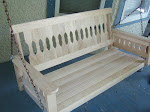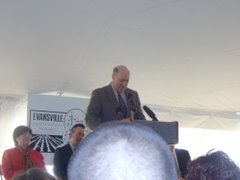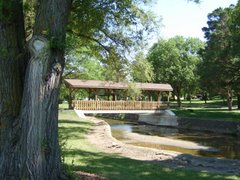(Ed. note: The following is one of several posts on "historic cities" and the various techniques of preserving style and yet being open to new development with new codes. )
In reviewing the design standards proposed for Evansville by our Planner, I spent some time reviewing various municipal codes in Minnesota---and just on a lark, I searched my old hometown---Mahtomedi---which just happens to be the size of Evanville.
It is nestled just across the Lake from White Bear Lake, and was the end of the trolly line---it was as was Excelsior in Minneapolis, where all the folks in the roaring 20's came on weekends to swim at the amusement park, and ride the ferry boats on the lake.
In those glorious days of the roaring 20's, even the gangsters came out to the lake on the weekend. In fact, my grandmother, who was a realtor, even rented a cottage to Ma Barker aka Ma Barker and the gang. Ah the good old days.....
There were wild diaparities between income and building quality----both rich and poor were really concentrating on....yes....the lake. So, in the recent times of "historic preservation", the city fathers had to consider----and the following is what they wrote in their municipal code (click on the post for the full 300 pages.)
7.2 R1-E HISTORIC MAHTOMEDI ZONING DISTRICT
A. Intent
i. District Characteristics: Historic Mahtomedi was largely developed in the 1920’s and ‘30s, as a summer home community with no apparent building or development regulations. This lack of regulation resulted in a neighborhood with a number of characteristics that contribute to its charm and attractiveness:
a. Narrow, meandering streets with few cars and many pedestrians.
b. Irregular, unpredictable pattern of streets, blocks, lots and open spaces.
c. Tightly-spaced housing reflecting the summer cottage era on White Bear Lake.
d. Unusual building placement on small lots, creating interesting open spaces, gardens and private spaces.
e. Diverse housing style, size, quality and value.
f. Diverse socio-economic appeal.
ii. Adaptation of Certain Standard Zoning Provisions. The City values this unique neighborhood and recognizes that in order to retain its character with all the pressures for improvements and redevelopment, extraordinary zoning procedures must be put in place. Therefore, several standard zoning principles applicable to other parts of the community will be adapted for purposes of this District as follows:
a. Non-Conforming Provision
1. It is not the intent of this Distinct to standardize development into a uniform, conforming pattern by gradually eliminating all of those features that are different. Some unique features make the neighborhood attractive and give it character. Nor is it the intent of this District to make development standards so low that all existing features will conform, as this would allow all new development to develop at low standards and would not contribute to the overall quality of the neighborhood.
2. The non-conforming provision in Section 6 of this Ordinance will be applied differently for purposes of carrying out the intent of this District. This will mean that:
a. All existing structures would be “conforming” and future development would appear similar to present development.
b. Non-conforming structures could be replaced or reconstructed with the same non-conformities as presently exist by following the standard application procedures for Building Permits.
c. Existing uses in the district would be conforming both as to use and site development and could be replaced with a similar use through the Conditional Use Permit procedure.
Chapter 11.01 - 18"
My point in noting the way Mahtomedi has approached the historic portion of their town----and yes there is a new PUD development also---is that they did not go back and as older small cottages were torn down or remodeled, impose rigid restrictions on the new structures meeting certain minimum size restrictions-----such a zoning scheme would have destroyed the community as I knew it. They allowed similar size structures to replace those destroyed.
Many communities, and maybe even Evansville, have restrictions on small homes that when they burn, cannot be rebuilt due to restrictions---that is why as you drive through Evansville, you see all the vacant lots with garages on them. What a waste of tax base.
Finally---there was not a "design ordinance" of how each section of town was supposed to look---It is clearly recognized in the ordinance that diversity is an asset in the lake setting.
Wednesday, June 06, 2007
Subscribe to:
Post Comments (Atom)






























No comments:
Post a Comment